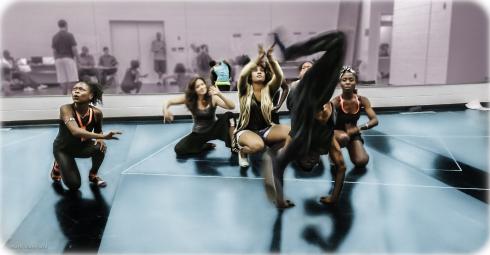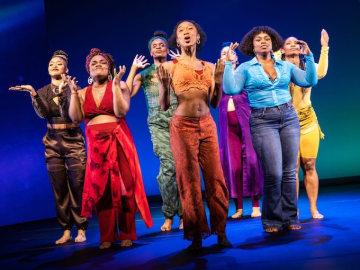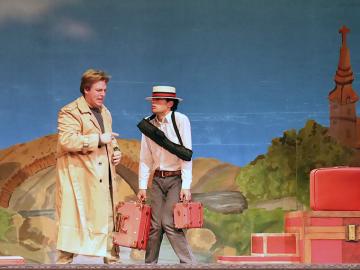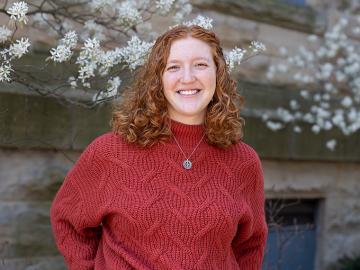Harlem and Shakespeare Meet in New Production
July 17, 2013
James Helmsworth

Harlem is critical to Justin Emeka’s latest production, and not just because he’s mounting the show there.
Emeka, an assistant professor of theater and dance, is incorporating the neighborhood’s diverse collection of traditions in his production of William Shakespeare’s A Midsummer Night’s Dream at Harlem’s Marcus Garvey Park. The play, put on by the Classical Theatre of Harlem, runs from July 13 to 30 and is free.
“You will see Harlem’s mark on every area of the production, including music, dance, rhythm, accents, style, and wit,” Emeka says.
In his interpretation, the main characters are Harlem residents who spend a magical night in the woods. The movements of the play’s fairies are based on West African dance and Capoeria Angola, an African-Brazilian martial art that Emeka teaches at Oberlin.
Much of the director’s past work similarly interweaves traditions from the African Diaspora, African American history, and theatrical staples. In 2010, Emeka directed Macbeth at Oberlin, setting it in the Reconstruction-era South, and modeled the witches’ ceremonies after West African Yoruba practices. He also directed Avery Brooks ’70 in Death of a Salesman at Oberlin in 2008. That same year, he directed Julius X, a fusion of Shakespeare’s Julius Ceasar with the life of Malcolm X.
Emeka has also updated Midsummer Night’s Dream to reflect contemporary issues. In the original version of the play, Hermia, a young woman, is in love with a young man named Lysander, but her father has another suitor planned for her. In Emeka’s version, Lysander is Lysandra, “to incorporate our current societal tension in regards to same-sex marriage,” Emeka says. “Hermia’s father is a conservative West Indian immigrant who wants to kill his daughter because of her desire.”
The cast, which primarily consists of people of color, includes two of Emeka’s Oberlin students: Daisy Peele ’13 is the assistant director and appears as a fairy, and Mark Blanchard ’14 is photographing the rehearsal process and appears in a supporting role.
Working on this production will provide a valuable experience for the students. “This is an extraordinary opportunity for them to watch and learn from professional artists at the top of their field, as well as build relationships with individuals and institutions to help them establish their sense of community in New York,” says Emeka.
The experience is also a first for the director. Although he has worked with theaters from Seattle, Washington, to New Haven, Connecticut, this is Emeka’s first time directing in New York City. “It is absolutely thrilling to be directing in Harlem,” he says. “The streets and buildings bear the memories of so many giants who walked before me. I feel a great sense of comfort walking in their footsteps.”
While Harlem is inspiring Emeka, Emeka is working to inspire Harlem’s residents. In the early stages of rehearsal, he led the cast in dances on the park’s stage, to give passersby a taste of what the production had planned. Reaching out to the community is a central component of the Classical Theatre of Harlem. Cultivating “new, young, and culturally diverse audience for the classics” and raising “awareness of theater and of great art in Harlem” are part of its mission statement.
Emeka explains that interaction with the neighborhood lies at the heart of his production. “Shakespeare is coming to Harlem and Harlem is coming to Shakespeare,” he says. “It is a mutual exchange.”
Tags:
You may also like…
‘Rainbow’ Connections
April 21, 2023
Amara Granderson’s visions of Broadway came into focus on the stages of Oberlin.
Oberlin Opera Theater to Present Offenbach and Rossini Double Bill
November 7, 2022
Oberlin Opera Theater will present a double bill of operas not seen on Oberlin stages previously—Offenbach’s operetta Le mariage aux lanternes ("The Wedding by Lantern Light") and Rossini’s burletta L'occasione fa il ladro ("Opportunity Makes a Thief")—in Hall Auditorium November 10-13.
Cassandra Gutterman-Johns Awarded Fulbright ETA to Czech Republic
May 2, 2022
A theater and creative writing major, Gutterman-Johns hopes to learn more about teaching and pedagogy with the Fulbright program in the Czech Republic.


